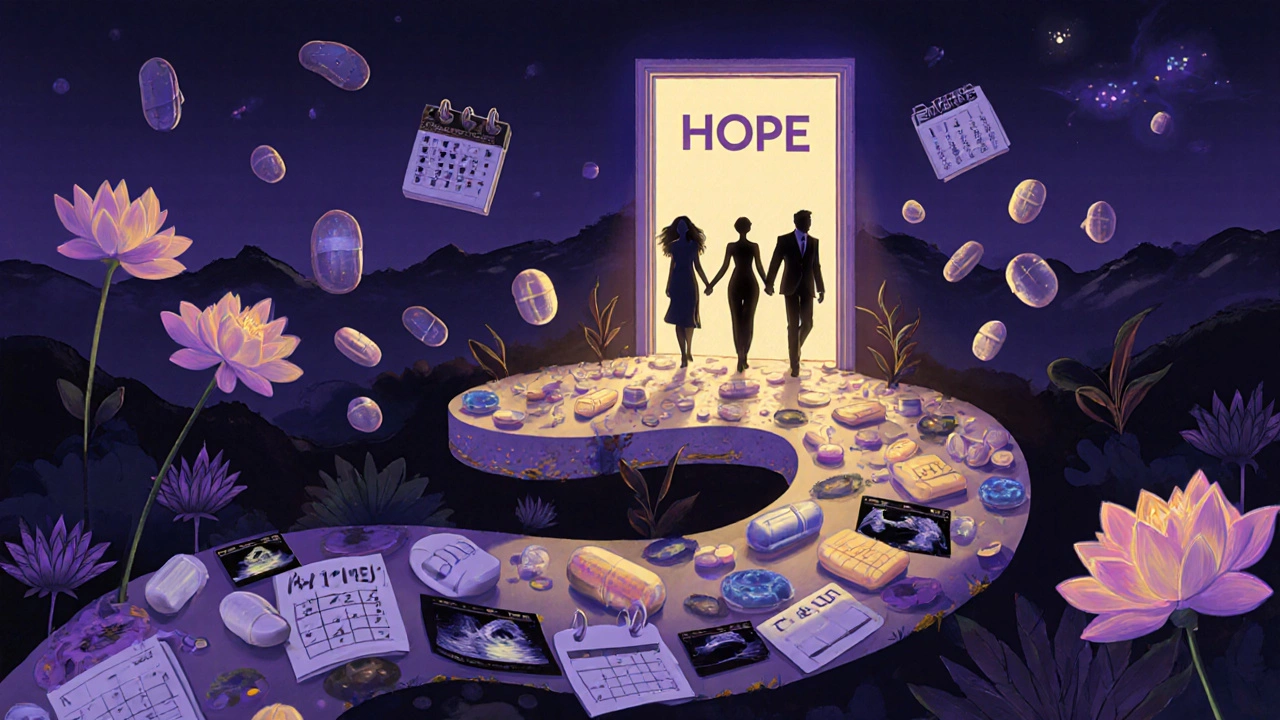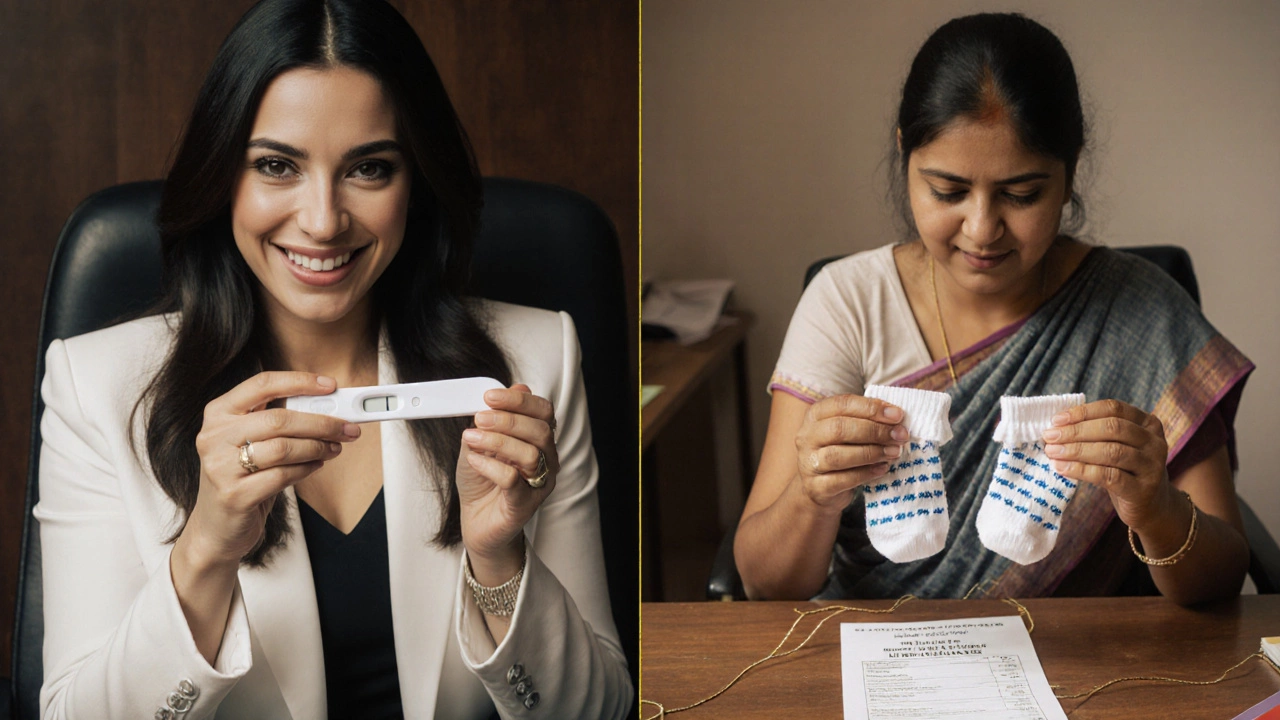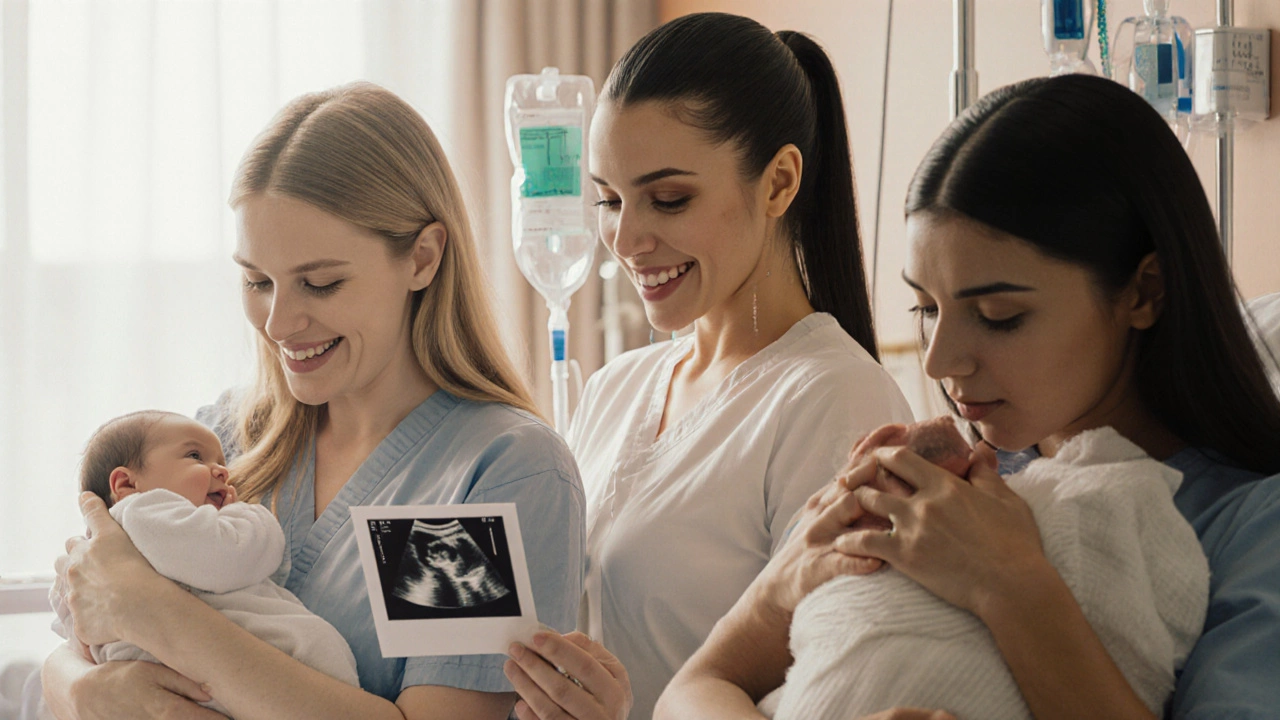IVF Success Rate Calculator
Your IVF Estimate
Your Results
Based on data from the article: For women under 35, success rates are 40-50%. Rates drop significantly after 35.
When you hear the word IVF, you might think of medical charts, hormone shots, and clinic waiting rooms. But for many people, IVF is also about hope - the kind that turns headlines into baby photos. Over the last two decades, more celebrities have openly shared their IVF journeys, breaking stigma and giving millions a sense of solidarity. These aren’t just gossip stories. They’re real-life proof that fertility struggles don’t discriminate - not by fame, fortune, or status.
Why Celebrities Talk About IVF
Celebrities don’t go public with IVF because they love attention. They do it because they’ve lived through the silence, the shame, the loneliness that often comes with infertility. When Chrissy Teigen shared her miscarriage and IVF journey on Instagram, she got over 100,000 comments from strangers saying, ‘Me too.’ That’s the power of visibility. It turns isolation into community.
For many, IVF isn’t just a medical procedure - it’s a long, emotional, expensive, and often humiliating road. The pressure to ‘just relax’ or ‘adopt instead’ doesn’t help. When public figures speak up, they challenge those myths. They show that IVF isn’t a last resort for the desperate - it’s a valid, common path to parenthood.
Well-Known Celebrities Who Used IVF
Here are some of the most publicized cases - each with their own story, timeline, and outcome.
- Emma Stone - The Oscar-winning actress revealed in 2019 that she underwent IVF after struggling to conceive. She and her husband, Dave McCary, welcomed their son in 2019. She’s spoken about how the process took longer than expected and how she had to manage anxiety while undergoing treatment.
- Shakira - The singer gave birth to her first child in 2022 at age 45. She confirmed in interviews that she used IVF to conceive. She said she had to freeze her eggs years earlier because she wasn’t ready for motherhood then. Her story highlights how age and timing play a huge role in IVF success.
- Kim Kardashian - After multiple miscarriages and health complications, Kardashian turned to IVF to have her third and fourth children. She shared her journey on Keeping Up with the Kardashians and later on social media, showing ultrasound images and the emotional toll of repeated failures.
- Christina Aguilera - Aguilera had two children through IVF after being told she might never conceive naturally. She’s been open about how the process affected her body and mental health, and how she had to adjust her career around treatment cycles.
- Tina Fey - Fey became a mother in her late 30s after IVF. She’s joked about the absurdity of fertility drugs in her memoir, but also talked seriously about how she felt like a ‘medical project’ during treatment.
- Elton John and David Furnish - The music legend and his husband used IVF with a surrogate to have both of their sons. They’ve been vocal about LGBTQ+ access to fertility treatments and how legal barriers made the process more complex.
- Michelle Obama - While she hasn’t confirmed IVF directly, she has spoken in detail about her struggles to conceive naturally and how she needed medical help to have both daughters. Many experts believe her description matches IVF or IUI, and her openness helped normalize the conversation.
What These Stories Have in Common
Despite different backgrounds, these celebrities share key patterns:
- Age matters - Most started IVF in their late 30s or early 40s. Fertility declines sharply after 35, and many waited until their careers were stable before trying to conceive.
- Multiple cycles are normal - Only about 30% of IVF cycles result in live births on the first try. Most of these celebrities went through two or more cycles before success.
- Cost is a hidden burden - Even with insurance, IVF can cost $15,000 to $25,000 per cycle in the U.S. Many celebrities have the resources, but their stories still highlight how expensive and inaccessible it is for most people.
- Emotional toll is real - Hormones, waiting, failed tests, and miscarriages create anxiety and depression. Celebrities don’t always show this side, but when they do, it’s powerful.

IVF Isn’t Just for the Rich
It’s easy to think IVF is only for stars with private clinics and unlimited budgets. But the truth is, IVF is becoming more common across income levels - even in countries like India, where fertility clinics in cities like Pune, Mumbai, and Delhi offer affordable packages.
In India, a single IVF cycle can cost between ₹1.5 lakh and ₹3 lakh ($1,800-$3,600), which is still a big sum for many families. But it’s far less than in the U.S. or the U.K. Some clinics now offer payment plans, donor egg programs, and government-supported schemes for low-income couples.
What these celebrities teach us isn’t that IVF is glamorous. It’s that it’s human. Whether you’re a Hollywood actress or a schoolteacher in Jaipur, the hope of holding your own child is the same.
How IVF Has Changed Over the Last 10 Years
When the first IVF baby was born in 1978, it was science fiction. Today, over 8 million babies have been born worldwide through IVF. The technology has improved drastically:
- Success rates - For women under 35, live birth rates per cycle are now around 40-50%. That’s up from under 20% in the 2000s.
- Genetic testing - PGT (preimplantation genetic testing) lets doctors screen embryos for chromosomal issues before transfer, reducing miscarriage risk.
- Freeze-all cycles - Instead of transferring embryos right after retrieval, doctors now often freeze them and transfer later. This gives the body time to recover and improves implantation rates.
- Minimal stimulation - New protocols use fewer drugs, reducing side effects and cost.
These advances mean more people are getting pregnant with fewer injections, less pain, and better odds. But access still isn’t equal.

What to Do If You’re Considering IVF
If you’re thinking about IVF, here’s what you need to know:
- Start with a fertility specialist - Don’t wait until you’ve been trying for two years. If you’re over 35, see a doctor after six months.
- Get basic tests done - Hormone levels, ovarian reserve, sperm analysis, and uterine scans are usually the first steps.
- Ask about success rates - Ask your clinic for their live birth rate per cycle for your age group. Don’t just take their word - check independent databases if available.
- Understand the costs - Ask what’s included: meds, monitoring, embryo transfer, freezing? What’s extra? Can you pay in installments?
- Prepare emotionally - IVF is a rollercoaster. Therapy, support groups, or even online forums can help you cope.
There’s no shame in needing help to become a parent. IVF isn’t a failure - it’s a solution.
What’s Next for IVF?
The future of IVF is moving fast. Researchers are working on:
- Artificial eggs and sperm from stem cells - potentially helping same-sex couples or those with no viable gametes.
- AI-powered embryo selection - using machine learning to pick the best embryo without invasive testing.
- Home-based hormone monitoring - apps and wearable sensors to track ovulation and hormone levels without daily clinic visits.
These aren’t science fiction anymore. They’re already in early trials. In 10 years, IVF might look nothing like it does today.
Do all celebrities who have children after 40 use IVF?
No, not all. Some women conceive naturally after 40, though it’s rare. Others use donor eggs or adoption. But when a celebrity has a child in her late 30s or 40s and hasn’t had children before, IVF is often the most likely explanation - especially if she’s spoken about fertility struggles.
Is IVF successful for women over 40?
Success rates drop significantly after 40. For women aged 40-42, the live birth rate per IVF cycle is around 10-15%. For those over 43, it’s often below 5%. Many in this age group use donor eggs, which can boost success rates to 50% or higher. Age isn’t the only factor - egg quality matters more than chronological age.
Can men also have fertility issues that require IVF?
Absolutely. Male factor infertility accounts for about 40-50% of IVF cases. Low sperm count, poor motility, or abnormal shape can make natural conception hard. In these cases, IVF with ICSI (intracytoplasmic sperm injection) is used - where a single sperm is injected directly into the egg. This technique has helped countless couples, including celebrities like Tom Brady and Gisele Bündchen.
How many IVF cycles does it usually take to succeed?
On average, couples need 2-3 cycles to achieve a live birth. Some succeed on the first try; others need five or more. The number depends on age, cause of infertility, and clinic quality. It’s important to plan financially and emotionally for multiple attempts.
Are there risks to IVF for the mother or baby?
IVF is generally safe. The main risks for mothers include ovarian hyperstimulation syndrome (OHSS), which is rare with modern protocols, and a slightly higher chance of multiple pregnancies (twins or triplets), which can lead to premature birth. For babies, there’s a small increase in the risk of low birth weight or preterm delivery - but most IVF babies are perfectly healthy. Long-term studies show no major differences in development or health compared to naturally conceived children.





